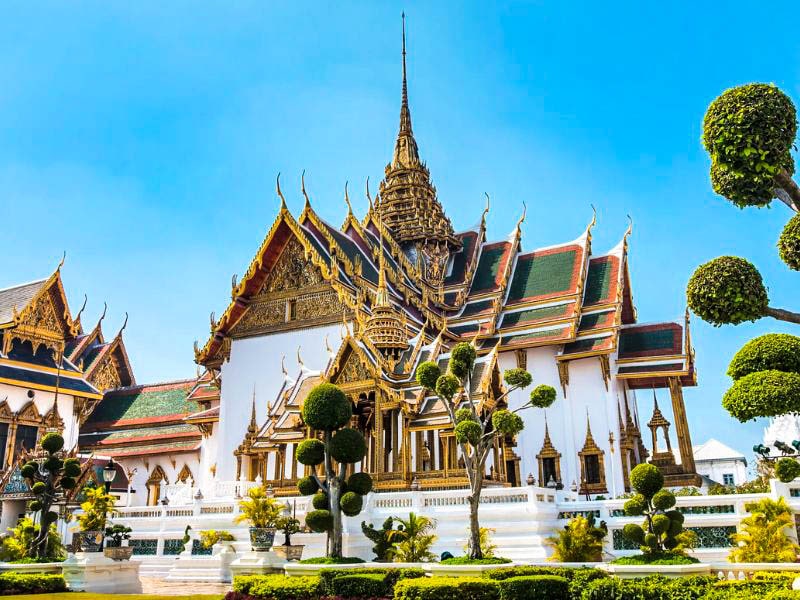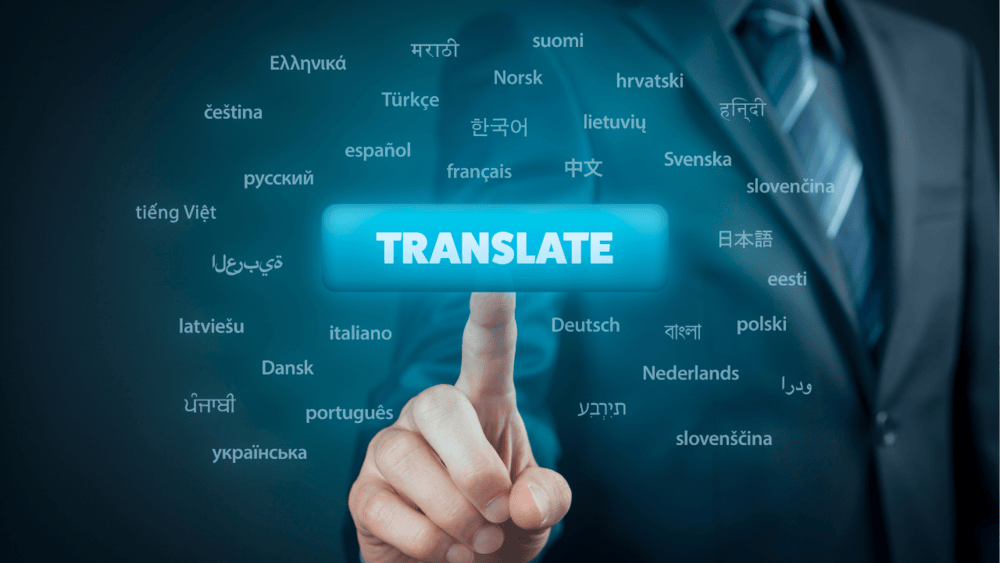
The Impact of Cultural and Linguistic Inclusivity to Translation Practices in Thailand
Thailand stands out not only for its tropical beauty and rich traditions, but for its vibrant cultural and linguistic diversity as well. Beyond its reputation as the “Land of Smiles,” Thailand plays an essential role in shaping how languages and cultures connect across Southeast Asia. At the center of this connection lies the fascinating world of translation practices, a field that continues to evolve as Thailand embraces inclusivity, identity, and modern communication.
In today’s globalized world, translation is no longer a mechanical act of converting one language into another. It has become a creative and ethical process that involves understanding people, preserving cultural values, and bridging different worldviews. Thailand’s approach to translation perfectly illustrates this transformation, showing how cultural and linguistic inclusivity has redefined what effective translation truly means. Kindly scroll down to discover more!
Understanding Translation Practices Through Thai Culture
To understand the uniqueness of translation practices in Thailand, one must first appreciate the country’s deep cultural roots. The local society is built upon harmony, respect, and spirituality, the values that naturally influence how people communicate. These same principles extend to how translators approach their work.
Rather than translating word-for-word, Thailand’s translators aim for emotional and cultural equivalence since their goal is to ensure that messages resonate naturally with local audiences, while maintaining the essence of the original meaning. For example, when translating Western advertisements, direct expressions of individual success may feel too assertive for target readers. Translators often adapt them to emphasize collective happiness, community values, or shared prosperity—concepts that align better with Thai sensibilities.
Moreover, this culturally mindful approach shows that translation practices in Thailand are not only about accuracy, but also about empathy. They preserve politeness, honor local customs, and highlight shared values that strengthen communication between cultures.
The Role of Linguistic Diversity in Thailand’s Translation Landscape

Thailand’s linguistic environment is far from monolithic. While Central Thai is the official language, the nation is home to many regional dialects and minority languages such as Isan, Northern Thai (Lanna), Southern Thai, Malay, Karen, and Hmong. Each carries its own unique rhythm, expressions, and worldview.
This linguistic richness presents both challenges and opportunities for translators. On one hand, the variation in vocabulary and tone requires sensitivity and expertise, while on the other hand, it allows for more inclusive translation outcomes that reach diverse audiences across the country.
In practical settings, such as public health campaigns, legal documents, or education materials, translators often localize messages into regional dialects to ensure understanding among local populations. This approach demonstrates how translation practices in Thailand actively promote equality in access to information and services.
Moreover, the urban Thai language has evolved to incorporate English words and global expressions, especially among younger generations. Translators working on social media or digital content often blend English and Thai seamlessly to reflect contemporary speech. This modern linguistic fusion highlights how the local translation industry adapts to global trends while staying true to its local identity.
Spirituality and Symbolism in Translation
Moreover, another unique feature that influences Thailand’s translation practices is its deep connection to spirituality, particularly Buddhism. Many Thai phrases, idioms, and expressions are rooted in moral and religious teachings that cannot be translated literally without losing their nuance.
For instance, the concept of “kreng jai.” It reflects a feeling of consideration and respectful restraint, often guiding how Thais interact with one another. Translating this concept into English or other languages is challenging since there is no single word that can capture its full meaning. In such cases, Thai translators must rely on contextual adaptation, finding the best way to communicate the sentiment rather than the literal phrase.
This delicate balancing act reflects the philosophical depth of Thailand’s translation culture. Translators are not merely linguistic mediators; they are cultural interpreters who bridge invisible values, emotions, and spiritual nuances between languages. Through this work, translation practices in Thailand preserve the subtle beauty of Thai communication, allowing it to be understood and respected across borders.
Academic Institutions Shaping Inclusive Translation Education
Thailand’s growing reputation in translation studies is supported by its strong academic foundations. Leading universities such as Chulalongkorn University, Thammasat University, and Mahidol University have established translation programs that emphasize cultural and linguistic inclusivity. Their approach goes beyond grammar and vocabulary as they train students to understand social context, ethics, and intercultural communication.
Furthermore, courses in these institutions explore topics like comparative linguistics, localization, and the psychology of communication. Students are taught to recognize that every translation decision carries cultural weight and ethical responsibility. By integrating local wisdom and global awareness, these universities are shaping the next generation of translators who can respond to the demands of multicultural communication.
Research produced by Thai academics has also expanded the theoretical understanding of translation practices in Asia. Studies often highlight how inclusive translation promotes intercultural empathy, reduces communication bias, and enhances ASEAN regional collaboration. In this sense, Thailand is positioning itself as a leader in inclusive translation education in the region.
Moreover, Thailand’s legalization of same-gender marriage marks a milestone for equality and inclusivity. This progress reshapes translation practices, especially in legal and social communication. Translators now adapt gendered Thai terms into inclusive language that respects both modern rights and cultural harmony. Public materials, legal texts, and media translations emphasize equality through compassionate, culturally sensitive wording. Academic and digital initiatives further support gender-neutral translation standards. Through inclusive linguistic choices, the local translators bridge traditional values with human rights, ensuring the nation’s evolving identity is communicated with accuracy, empathy, and respect.
The Digital Shift: Inclusivity in Machine and AI Translation

As the world becomes increasingly digital, Thailand’s translation industry has begun embracing machine translation (MT) and AI-driven tools. These technologies bring speed and convenience, allowing large volumes of text to be translated quickly. However, they also introduce a new challenge: how to retain cultural sensitivity and linguistic authenticity in automated processes.
Thai, as a tonal and context-sensitive language, presents unique difficulties for AI translation systems. Automated tools often misinterpret politeness levels, tone markers, or idiomatic expressions, leading to translations that sound awkward or even impolite. Recognizing this, local researchers and linguists are developing inclusive language datasets that reflect the country’s full cultural and linguistic spectrum.
The goal is not to replace human translators but to enhance translation practices with culturally aware technology. AI can handle the technical side of translation, while human expertise ensures that messages remain contextually accurate and emotionally resonant. This human-AI collaboration represents the next evolution of inclusive translation in Thailand.
Inclusivity Across Industries: Education, Healthcare, and Tourism
The impact of inclusive translation practices extends far beyond academia or literature. It influences every sector of Thai society.
In education, inclusive translation ensures that students from different linguistic backgrounds can access the same quality of learning materials. For instance, textbooks and digital resources are now translated into regional dialects to reach students in rural areas, bridging the education gap.
Meanwhile, for the healthcare sector, culturally sensitive translation has become essential. Translators play a key role in ensuring patients understand medical procedures, prescriptions, and health campaigns, particularly in multicultural provinces near the Malaysian border or in northern hill tribe communities. This inclusivity directly affects patient safety, trust, and the overall effectiveness of public health initiatives.
On the other hand, the tourism industry, one of Thailand’s largest economic sectors, also benefits greatly from skilled translation. Tourist brochures, websites, and signage are translated into multiple languages, often localized to reflect cultural hospitality and Thai values. Through effective translation, Thailand not only welcomes travelers but also communicates its identity, a balance of friendliness, tradition, and modernity.
Even in diplomacy and business, translation is a strategic tool that builds Thailand’s global image. Accurate and culturally respectful translation enhances international negotiations and strengthens relationships across borders. Every translated message, whether in an official speech or a corporate agreement, becomes a reflection of Thailand’s commitment to mutual understanding.
The Future of Translation Practices in Thailand
As Thailand continues to integrate more deeply with the global community, the future of translation practices will likely blend cultural empathy with technological innovation. As a result, translators of the next decade will need to master both linguistic skills and digital literacy, using technology responsibly while upholding cultural integrity.
Hence, the universities and translation agencies are already preparing for this shift by offering interdisciplinary programs that combine linguistics, technology, and intercultural studies. The emphasis is on nurturing translators who can adapt to a rapidly changing communication landscape while maintaining ethical sensitivity and creative precision.
Ultimately, Thailand’s inclusive approach to translation is shaping a more connected and compassionate global dialogue. It demonstrates that when translation goes beyond words—when it becomes an act of understanding—it has the power to transform societies.
Conclusion
The evolution of translation practices in Thailand reflects a beautiful blend of culture, compassion, and communication. Rooted in its linguistic diversity and spiritual traditions, Thailand approaches translation as both an art and a responsibility.
By emphasizing cultural inclusivity, linguistic awareness, and ethical translation, the country has created a model for how nations can communicate authentically in a globalized era. Whether through human translators or AI-assisted tools, the heart of Thailand’s translation philosophy remains the same: to connect people, respect differences, and share meaning beyond words.
Want Your Message to Truly Resonate in the Land of Smiles?
From kreng jai nuances to regional dialects and gender-inclusive language, Digital-Trans Asia delivers culturally perfect Thai localization that feels 100 % natural — because it’s done by native Thai experts who live and breathe the culture.
Don’t settle for robotic translations. Let your brand speak with authentic Thai heart.
Contact Digital-Trans Asia Now → Make Thailand Fall in Love with Your Message